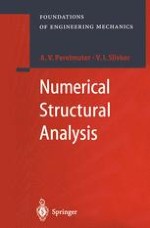To our sons, Mike, Andrew, Alex, who did not inherit their fathers' level of interest in applied mechanics, but who became sophisticated in software development and in this regard surpassed their parents. A.P., V.S. Hard times came, the god5 got angry. Children do not behave themselves and everybody wishes to write a book. Ancient Babylonian inscription X Preface Preface to the English Edition The book you are reading is a translation from Russian into English. Within a pretty short term this book saw two editions in Russian. The authors received in spiring responses from readers that both stimulated our continuing and improving this work and made sure it would not be in vain of us to try to multiply our readers by covering the English-speaking engineering community. When we prepared the present edition, we took into account interests of the Western readers, so we had to make some changes to our text published earlier. These changes include the following aspects. First, we excluded a lot of references and discussions regarding Russian engi neering codes. It seems to us those are of no real interest for Western engineers oriented at Eurocode or national construction design regulations.
